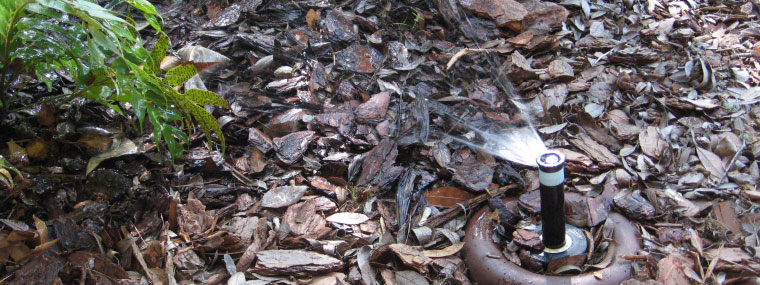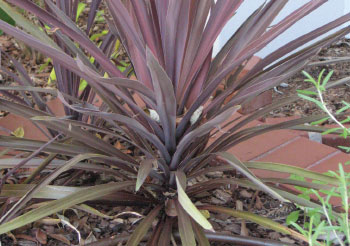
Micro-irrigation in the Landscape
by Lynn Barber / Published September 2014

Water is among our most valued resources. It is required for survival and is non-renewable at our current rate of consumption. According to the Florida Office of Economic and Demographic Research, Florida will see an increase from 19.1 million residents today to approximately 21 million by 2020. This will result in an increasing demand on water supply for growth. That said, water conservation is even more important today than in the past.
There are several ways to conserve water in the landscape, one of which is micro-irrigation. It is a system that provides small amounts of water compared to an in-ground irrigation system, is easy to install, connects to an outdoor spigot/hose bib, and provides 30 gallons per hour (gph) or less. There are four types of micro-irrigation: micro-sprayers, micro-bubblers, drippers, and drip tubing.
Micro-sprayers/sprinklers have interchangeable emitters that can produce up to 25 gph. This type of sprayer is installed on a stake, wetting foliage and a larger surface area of four to six feet.
Micro-bubblers are installed on short stakes, have solid sprays or rays in 180 or 360 degree patterns, an adjustable flow up to 25 gph, are used to establish and maintain larger plants, and have less evaporation than micro-sprayers/sprinklers.
Drippers come in sizes from 0.5 to 24 gph, apply water directly to the soil resulting in minimal evaporation, attach to a distribution tube or spaghetti tubing, and are used for widely spaced plants or containers.
Drip tubing contains factory-installed emitters inside the tubing that are pressure compensating, with a flow rate of 0.9 gph per foot and has fewer parts/pieces than other types of micro-irrigation. Pressure compensating means the same amount of water is provided from each emitter. This differs significantly from a soaker hose where the holes closer to the water source emit more water than those further from the water source.
 Maintenance on micro-irrigation systems includes checking plants for over or under watering, inspecting and cleaning filters, flushing out the main poly line at least once a year, and making sure plants have adequate numbers of emitters for their root size. Adjust spray patterns as plants grow. A monthly walk through your landscape beds will allow you to make adjustments or repairs as needed that could be due to lawn mowers, weed eaters, or garden critters, such as armadillos leveling spray stakes.
Maintenance on micro-irrigation systems includes checking plants for over or under watering, inspecting and cleaning filters, flushing out the main poly line at least once a year, and making sure plants have adequate numbers of emitters for their root size. Adjust spray patterns as plants grow. A monthly walk through your landscape beds will allow you to make adjustments or repairs as needed that could be due to lawn mowers, weed eaters, or garden critters, such as armadillos leveling spray stakes.
The advantages of using a micro-irrigation system include:
- Water is applied in gallons per hour (gph) versus gallons per minute (gpm) from an in-ground irrigation system
- Evaporation and erosion are decreased
- Design, installation, and use are simple
- Products are interchangeable among vendors
- Used as “nurse system” for new plantings
The disadvantages of and solutions for using a micro-irrigation system include:
- Difficulty in detecting problems—don’t bury drip tubing under mulch
- Easy to over-irrigate—use a timer!
- Emitter clogs if poor water quality—if clogged, soak emitter in vinegar/water solution
- Initial cost of set-up—much less than the cost of an in-ground irrigation system.
Check with your county extension office to see if they offer a micro-irrigation workshop and if a free micro-irrigation starter kit is provided.
As always, follow the landscape or architectural control procedures in your deed restrictions before making changes. If you have an in-ground irrigation system, you can retrofit that system to micro-irrigation for your landscape beds. For more information about retrofitting and the nine principles of the Florida-Friendly Landscaping™ Program or for assistance with gardening related questions, contact your local county UF/IFAS Extension and/or visit the University of Florida websites: solutionsforyourlife.com and edis.ifas.ufl.edu.

